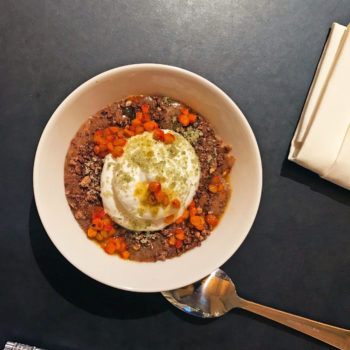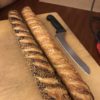We’ve talked before about the rebirth of Scandinavian cuisine and Brendan did a story from Copenhagen on how their open-faced sandwiches are a thing that’s become trendy, but we’ve never heard about a common Danish breakfast food that Brendan has been calling “beer porridge.”
It’s is a dish Claus Meyer — one of the best restaurateurs in Denmark — has been selling since he moved to New York and launched the Great Northern Hall, a food court he designed in Grand Central Station. So Brendan met up with him, ordered a bowl and asked Claus to tell us about it.

Claus Meyer: This is a kind of a danish, very classical rye porridge, we call it øllebrød.
Brendan Francis Newnam: Øllebrølia?
Claus Meyer: You’re getting very close. So it’s something that our grand-grand parents would make with the leftover rye bread.
Brendan Francis Newnam: But this looks a little more exotic than just rye bread, so what else is going on in here?
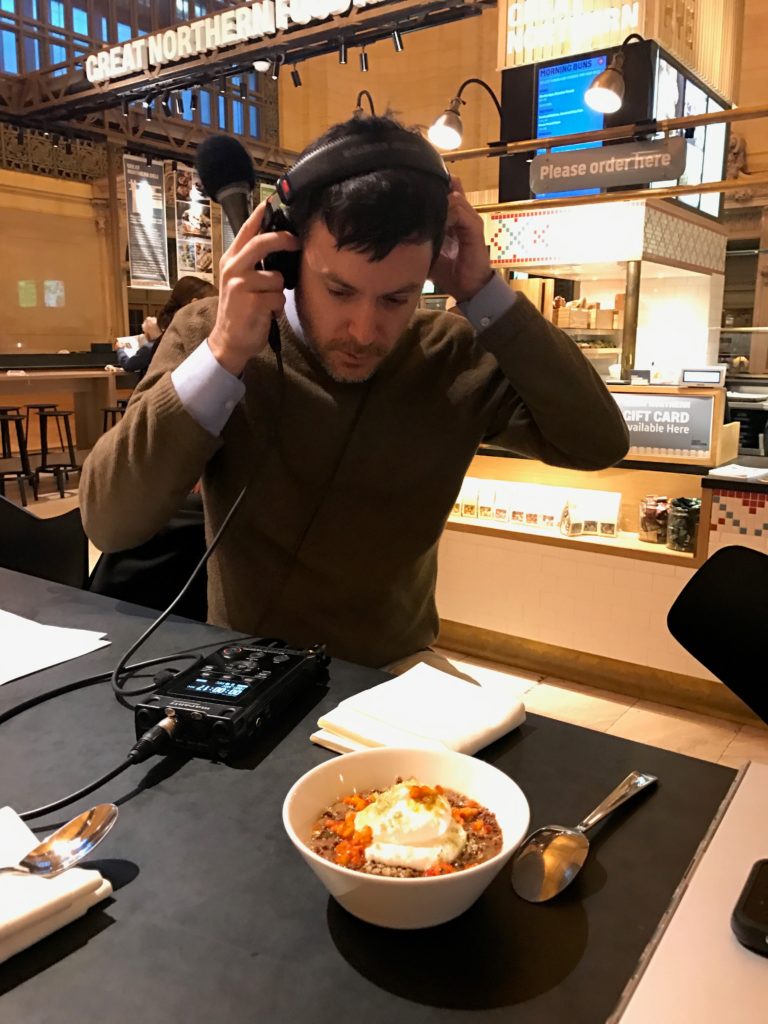
Claus Meyer: This is a modern take on it. So normally it would only be old rye bread re-hydrated in beer and water, and then you would add sugar, a bit of sugar or honey and then you would kind of cook it until it becomes a porridge.
I have to say the rye part in it’s own right is a little bit, kind of, mellow, dark, slightly bitter, of course, sweet too, but it becomes so much better if you add, in this case, whipped cream, egg yolk beaten with sugar, some sort of vanilla custard and then we have just, you know, added small chunks of chocolate, caramelized rye to produce a more complex, badass total flavor.
Brendan Francis Newnam: Is that a Danish word too, badass?
Claus Meyer: No, that’s not very Danish!
Brendan Francis Newnam: Why is rye so, why is that so associated with Scandinavian cooking?
Claus Meyer: There was this idea that we couldn’t grow wheat and also it is difficult to grow wheat because wheat, in order to reach complete maturity, demands a warmer climate with more sunshine.
You can actually grow certain varieties of wheat but it is true that rye, as well as barley and oat, grow better in a cold climate, in a cold, rough climate than the one we have in Scandinavia, than in a warmer climate which is why you find the bigger part of the rye production in the world in places like Russia, Finland, Sweden, and Denmark.
Brendan Francis Newnam: So, why were they re-hydrating it with beer? That sounds like what you do in a dorm room not what you do in a kitchen.
Claus Meyer: I think because they didn’t wanna lose the beer. Be able to eventually sometimes go sour and also remember that, back in the time you couldn’t drink the water. So one way in which to make the water was to boil it and get it through the fermentation process involved in beer production. So, we were drinking beer instead of water not only to get drunk but also because it was more, kind of, healthy or sane.
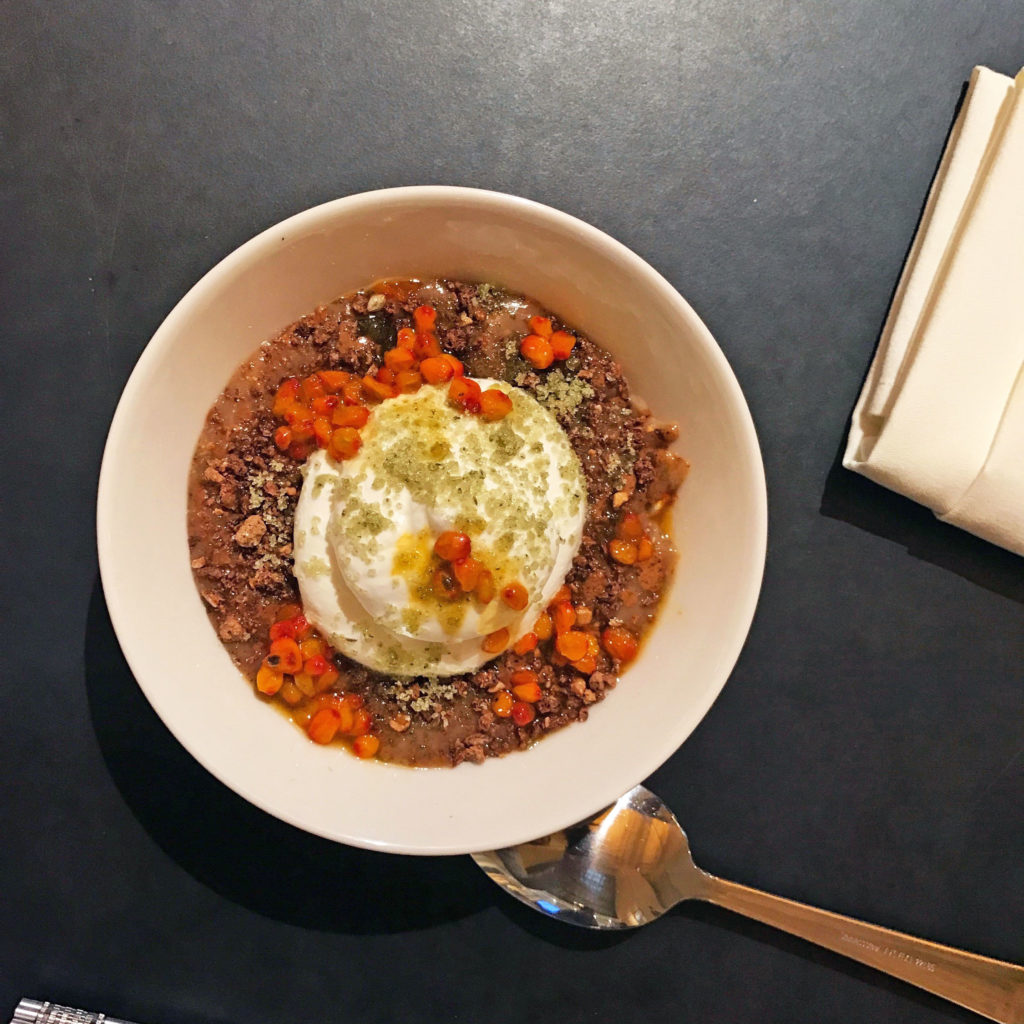
Brendan Francis Newnam: All right, so, maybe I can taste this and I can ask you a few more questions. And we have a picture of this which people will be able to see on our website, there’s porridge and then on top of it is this beautiful, it’s like autumnal colors of orange and brown and rust and then there’s white foam. What is the foam?
Claus Meyer: It’s kind of a buttermilk vanilla foam.
Brendan Francis Newnam: Sounds amazing. And then there’s like, it’s almost candied green on top of it.
Claus Meyer: Tarragon sugar.
Brendan Francis Newnam: Tarragon sugar, excellent! I’m gonna try it. [Brendan tries the øllebrød.] Oh, my goodness. That is very complex. The chef, you give it a thumbs up?
Claus Meyer: Yeah I do.
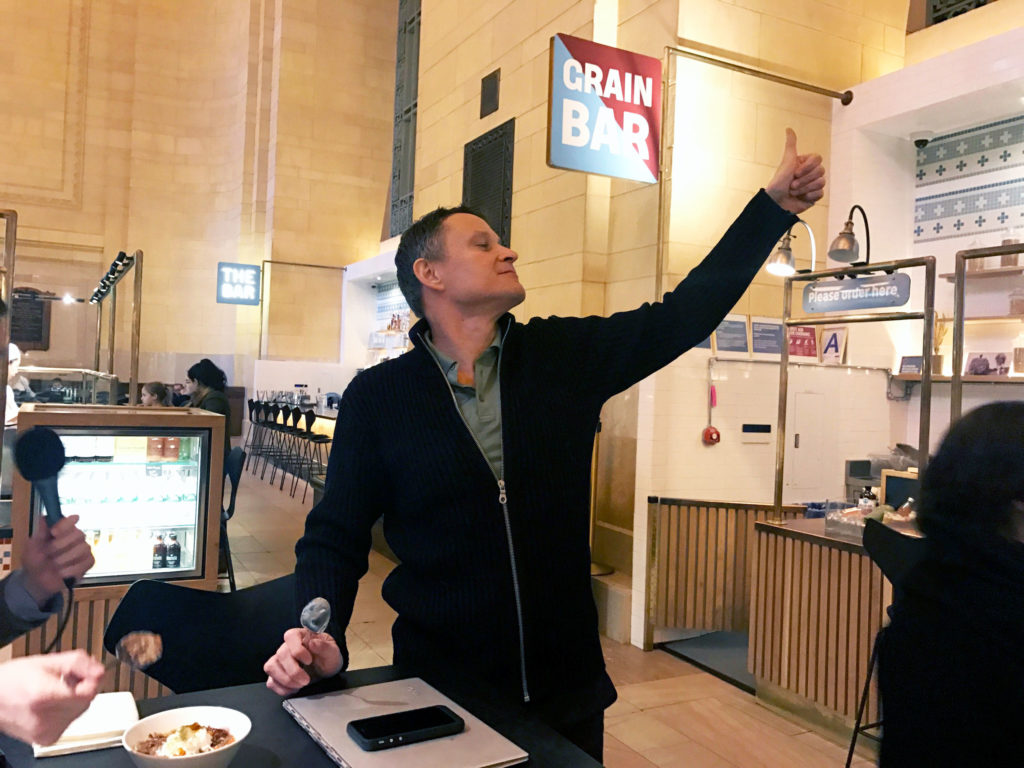
Brendan Francis Newnam: It’s almost like there’s like, I taste licorice. I taste the rye, I taste the chocolate. What is jumping out at you?
Claus Meyer: The orange flavors of, all this kind of orangey exotic flavors of the sea buckthorn.
Brendan Francis Newnam: Sea buckthorn, what is sea buckthorn?
Claus Meyer: Sea buckthorn is probably the most healthy berry in the world. These small, beautiful, orange wonders that weight something like half a gram each contain as much vitamin C as a whole orange. Each one. And they grow wildly, close to the seashores of particularly the whole Scandinavian region.
They’re sitting on bushes where there are thorns. There was certain ways to get them off the bush and once you have them they don’t really taste very well eaten raw, they’re extremely acid and tart. But once you cook them or marinade them with sugar a miracle happens and a flavor comes out that is no longer sour socks, but closer to mango, kumquat, yuzu, mandarin. It’s pretty amazing.
Brendan Francis Newnam: Well, so you moved to New York recently. Have you availed yourself of any local New York breakfast foods? What have you been eating here?
Claus Meyer: To be honest, I most often don’t like very much the idea of eating breakfast out in New York. I think it’s strange to have these enormous portions of something. You know, it’s ten pancakes or a french toast that’ll kill you.
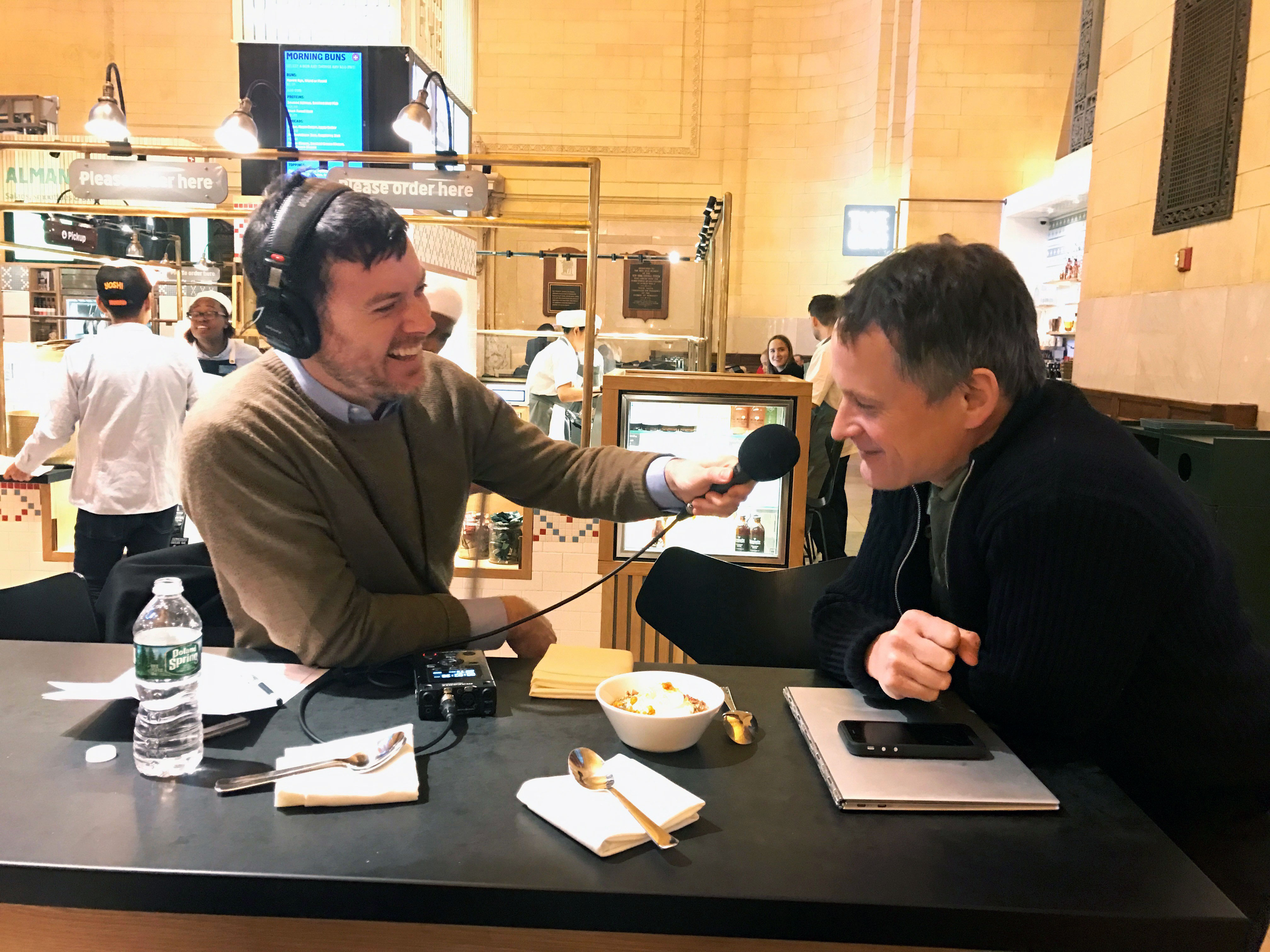
Brendan Francis Newnam: A challah french toast.
Claus Meyer: Yeah, challah french toast. You wake up in the night sweating because you think of that french toast that was about to kill you. You can’t eat for the next thirty six hours. I prefer meals that are a little bit better calibrated or-
Brendan Francis Newnam: No chicken and waffles for you?
Claus Meyer: That’s, for me, I don’t wanna wake up that way, but, I mean, I love eating lunch and dinner.”
